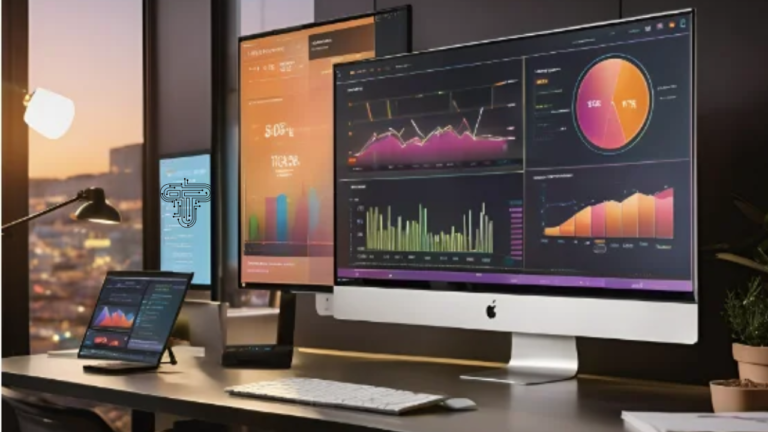Sustainable PCB Design: Eco-Friendly Materials and Manufacturing Techniques

In today’s world, where environmental concerns are at the forefront, the electronics industry increasingly focuses on sustainable practices. One crucial aspect of this shift is designing and manufacturing printed circuit boards (PCBs). By adopting eco-friendly materials and manufacturing techniques, we can significantly reduce the environmental impact of electronic devices. In this comprehensive article, we will explore the world of sustainable PCB design, focusing on custom circuit board design and electronics design.
The Importance of Sustainable PCB Design
Reducing Environmental Impact
Sustainable PCB design is essential for minimizing the environmental impact of electronic devices. Using eco-friendly materials and manufacturing techniques can reduce the use of hazardous substances, minimize waste, and conserve natural resources. This benefits the environment and helps companies meet increasingly stringent environmental regulations.
Meeting Consumer Demands
Consumers are becoming more environmentally conscious and are demanding products that align with their values. By adopting sustainable PCB design practices, companies can appeal to this growing market segment and differentiate themselves from competitors. This can lead to increased customer loyalty and a positive brand image.
Cost Savings
While sustainable PCB design may initially require some investment, it can lead to long-term cost savings. Companies can lower their production costs and improve their bottom line by reducing waste, minimizing the use of hazardous materials, and optimizing manufacturing processes.
Eco-Friendly Materials for PCB Design
Halogen-Free Materials
Traditional PCBs often contain halogenated materials, such as brominated flame retardants (BFRs), which can harm the environment and human health. Halogen-free materials, such as phosphorus-based flame retardants, offer a more sustainable alternative. These materials provide the same level of fire protection without the negative environmental impact.
Biodegradable Substrates
Biodegradable substrates, such as those made from plant-based materials or recycled paper, are gaining popularity in sustainable PCB design. These materials decompose naturally over time, reducing electronic waste in landfills. While biodegradable substrates may not be suitable for all applications, they can be an excellent choice for disposable or short-lived electronic devices.
Recycled Metals
Using recycled metals, such as copper and tin, in PCB design can help reduce the demand for virgin materials and conserve natural resources. Recycled metals can be obtained from various sources, including old electronic devices and manufacturing waste. By incorporating recycled metals into custom circuit board designs, companies can reduce their environmental footprint and support the circular economy.
Sustainable Manufacturing Techniques
Green Soldering
Traditional soldering processes often involve the use of lead-based solder, which can be harmful to the environment and human health. Green soldering techniques, such as lead-free and low-temperature soldering, offer a more sustainable alternative. Lead-free solder typically contains a combination of tin, silver, and copper, while low-temperature soldering uses materials with lower melting points, reducing energy consumption during the soldering process.
Additive Manufacturing
Additive manufacturing, or 3D printing, is a promising technology for sustainable PCB design. Unlike traditional subtractive manufacturing methods, which involve removing material to create the desired shape, additive manufacturing builds up the PCB layer by layer. This process reduces waste, as only the necessary material is used. Additive manufacturing also enables the creation of more complex and compact designs, which can lead to smaller, more efficient electronic devices.
Energy-Efficient Manufacturing
Implementing energy-efficient manufacturing practices can significantly reduce the environmental impact of PCB production. This can include using renewable energy sources, such as solar or wind power, to run manufacturing equipment and optimizing production processes to minimize energy consumption. By reducing energy use, companies can lower their carbon footprint and contribute to the fight against climate change.
Design Considerations for Sustainable PCBs
Miniaturization
Miniaturization is a critical trend in electronics design and can contribute to sustainability. Companies can reduce the material used, minimize waste, and create more efficient devices by designing smaller, more compact PCBs. Miniaturization can also reduce energy consumption, as smaller components require less power.
Modular Design
Modular design involves creating PCBs with interchangeable components that can be easily replaced or upgraded. This approach can extend the life of electronic devices, reducing the need for frequent replacements and minimizing electronic waste. Modular design also enables easier repair and maintenance, which can further prolong the lifespan of electronic products.
Design for Disassembly
Design for disassembly (DfD) is a crucial aspect of sustainable PCB design. By designing PCBs that can be easily disassembled, companies can facilitate the recycling and reuse of electronic components. This can involve using snap-fit connections instead of glue, minimizing the use of screws and other fasteners, and clearly labeling components for easy identification. DfD makes recycling more efficient and enables the recovery of valuable materials that can be used to produce new electronic devices.
Challenges and Solutions in Sustainable PCB Design
Balancing Performance and Sustainability
One of the main challenges in sustainable PCB design is balancing performance with eco-friendly materials and manufacturing techniques. Some sustainable materials may offer a different level of performance than traditional materials, which can be a concern for high-performance applications. However, ongoing research and development are continually improving the performance of eco-friendly materials, making them increasingly viable for a broader range of applications.
Supply Chain Management
Ensuring the sustainability of PCB design also requires careful supply chain management. Companies must work with suppliers who share their commitment to sustainability and can provide eco-friendly materials and components. This may involve conducting supplier audits, establishing sustainability criteria for supplier selection, and collaborating with suppliers to develop innovative sustainable solutions.
Regulatory Compliance
Sustainable PCB design must also take into account various environmental regulations and standards. These can include the Restriction of Hazardous Substances (RoHS) directive, the Waste Electrical and Electronic Equipment (WEEE) directive, and the Registration, Evaluation, Authorization, and Restriction of Chemicals (REACH) regulation. Companies must ensure that their PCB designs comply with these regulations to avoid legal and financial consequences.
The Future of Sustainable PCB Design
Emerging Technologies
As technology evolves, new opportunities for sustainable PCB design are emerging. For example, developing conductive inks and pastes enables the creation of printed electronics, which can be more environmentally friendly than traditional PCBs. Similarly, using graphene and other advanced materials opens up new possibilities for sustainable electronics design.
Circular Economy
The concept of a circular economy, where waste is minimized and resources are used for as long as possible, is gaining traction in the electronics industry. Sustainable PCB design plays a crucial role in this transition, as it enables the creation of products that can be easily repaired, upgraded, and recycled. By embracing the principles of a circular economy, companies can reduce their environmental impact and create a more sustainable future.
Collaboration and Knowledge Sharing
Advancing sustainable PCB design requires collaboration and knowledge sharing among industry stakeholders. This can involve partnerships between companies, academia, and government agencies to develop new sustainable technologies and best practices. It can also affect the creation of industry standards and certifications to promote sustainable PCB design and manufacturing.
Read More
Conclusion
Sustainable PCB design is critical to creating a more environmentally friendly electronics industry. Companies can significantly reduce the environmental impact of electronic devices by using eco-friendly materials, implementing sustainable manufacturing techniques, and considering factors such as miniaturization, modular design, and design for disassembly. While challenges remain, the future of sustainable PCB design is promising, with emerging technologies, the adoption of circular economy principles, and increased collaboration and knowledge sharing among industry stakeholders. As we move towards a more sustainable future, custom circuit board design and electronics design will play a vital role in shaping the electronics industry and protecting our planet for future generations.






